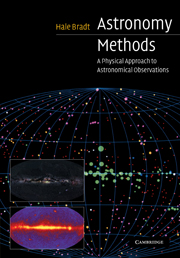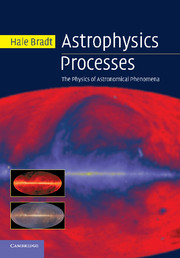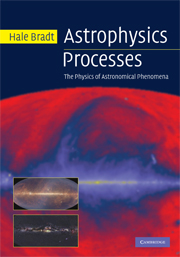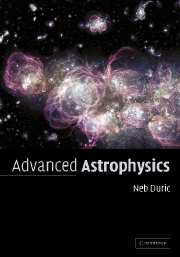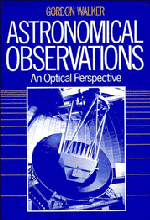Astronomy Methods
Astronomy Methods, first published in 2003, is an introduction to the basic practical tools, methods and phenomena that underlie quantitative astronomy. Taking a technical approach, the author covers a rich diversity of topics across all branches of astronomy, from radio to gamma-ray wavelengths. Topics include the quantitative aspects of the electromagnetic spectrum, atmospheric and interstellar absorption, telescopes in all wavebands, interferometry, adaptive optics, the transport of radiation through matter to form spectral lines, and neutrino and gravitational-wave astronomy. Clear, systematic presentations of the topics are accompanied by diagrams and problem sets. Written for undergraduates and graduate students, this book contains a wealth of information that is required for the practice and study of quantitative and analytical astronomy and astrophysics.
- Concentrates on the underlying tools, methods and phenomena in astronomy
- Directed towards the technically inclined student
Reviews & endorsements
"Astronomy Methods: A Physical Approach to Astronomical Observations by Hale Bradt, a professor emeritus in MIT's physics department, is a wonderful welcome to a field in desperate need of more textbooks covering the subject." Physics Today Online
Product details
January 2004Paperback
9780521535519
458 pages
244 × 170 × 24 mm
0.91kg
108 b/w illus. 16 tables 89 exercises
Available
Table of Contents
- 1. Astronomy through the centuries
- 2. Electromagnetic radiation
- 3. Co-ordinate systems and charts
- 4. Gravity, celestial motions, and time
- 5. Telescopes
- 6. Detectors and statistics
- 7. Multiple telescope interferometry
- 8. Point-like and extended sources
- 9. Properties and distances of celestial objects
- 10. Absorption and scattering of photons
- 11. Spectra of electromagnetic radiation
- 12. Astronomy beyond photons.

